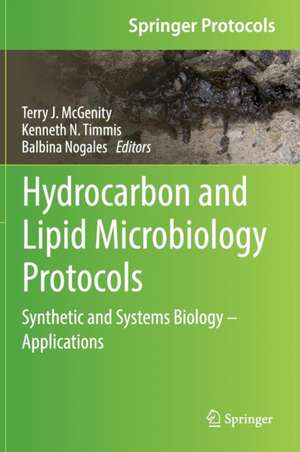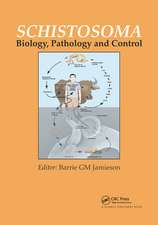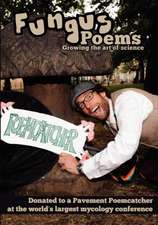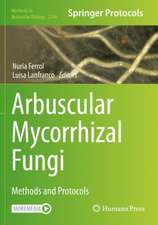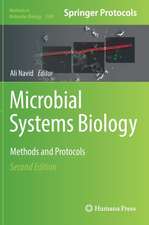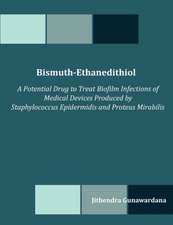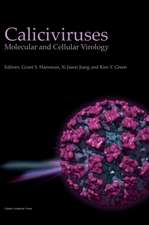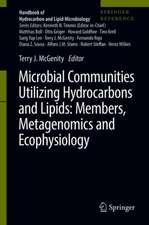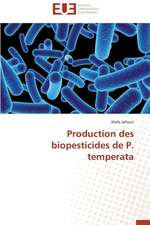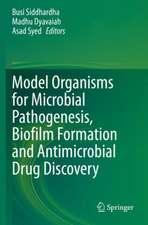Hydrocarbon and Lipid Microbiology Protocols: Synthetic and Systems Biology - Applications: Springer Protocols Handbooks
Editat de Terry J. McGenity, Kenneth N. Timmis, Balbina Nogales Fernándezen Limba Engleză Hardback – 19 aug 2016
This Volume presents protocols for systems and synthetic biology applications in the field of hydrocarbon and lipid microbiology. It complements another Volume that describes generic protocols for wet experimental and computer-based systems and synthetic biology studies. The protocols in this Volume demonstrate how to employ systems and synthetic biology approaches in the design of microbes for the production of esters, isoprenoids, hydrophobic polymers, rhamnolipid biosurfactant, and peptide antimicrobial and thioether-stabilised molecules. Also presented is a protocol for the engineering of transcription factor-based biosensors for intracellular products, and another for the creation of a synthetic hydroxylase with novel activity for the selective oxyfunctionalisation of linear alkanes.
Hydrocarbon and Lipid Microbiology Protocols
There are tens of thousands of structurally different hydrocarbons, hydrocarbon derivativesand lipids, and a wide array of these molecules are required for cells to function. The global hydrocarbon cycle, which is largely driven by microorganisms, has a major impact on our environment and climate. Microbes are responsible for cleaning up the environmental pollution caused by the exploitation of hydrocarbon reservoirs and will also be pivotal in reducing our reliance on fossil fuels by providing biofuels, plastics and industrial chemicals. Gaining an understanding of the relevant functions of the wide range of microbes that produce, consume and modify hydrocarbons and related compounds will be key to responding to these challenges. This comprehensive collection of current and emerging protocols will facilitate acquisition of this understanding and exploitation of useful activities of such microbes.
| Toate formatele și edițiile | Preț | Express |
|---|---|---|
| Paperback (2) | 635.01 lei 6-8 săpt. | |
| Springer Berlin, Heidelberg – 15 iun 2018 | 635.01 lei 6-8 săpt. | |
| Springer Berlin, Heidelberg – 15 iun 2018 | 637.78 lei 6-8 săpt. | |
| Hardback (2) | 642.51 lei 6-8 săpt. | |
| Springer Berlin, Heidelberg – 19 aug 2016 | 642.51 lei 6-8 săpt. | |
| Springer Berlin, Heidelberg – 19 aug 2016 | 645.47 lei 6-8 săpt. |
Din seria Springer Protocols Handbooks
- 18%
 Preț: 782.42 lei
Preț: 782.42 lei - 5%
 Preț: 1817.13 lei
Preț: 1817.13 lei - 18%
 Preț: 1120.18 lei
Preț: 1120.18 lei -
 Preț: 403.91 lei
Preț: 403.91 lei - 15%
 Preț: 662.30 lei
Preț: 662.30 lei - 18%
 Preț: 1855.11 lei
Preț: 1855.11 lei - 18%
 Preț: 1918.09 lei
Preț: 1918.09 lei - 18%
 Preț: 896.08 lei
Preț: 896.08 lei - 15%
 Preț: 644.82 lei
Preț: 644.82 lei - 20%
 Preț: 593.48 lei
Preț: 593.48 lei - 18%
 Preț: 966.27 lei
Preț: 966.27 lei - 5%
 Preț: 2329.29 lei
Preț: 2329.29 lei - 18%
 Preț: 952.09 lei
Preț: 952.09 lei - 5%
 Preț: 737.11 lei
Preț: 737.11 lei - 15%
 Preț: 648.24 lei
Preț: 648.24 lei - 18%
 Preț: 984.44 lei
Preț: 984.44 lei - 18%
 Preț: 977.34 lei
Preț: 977.34 lei - 18%
 Preț: 1674.20 lei
Preț: 1674.20 lei - 18%
 Preț: 1841.06 lei
Preț: 1841.06 lei - 18%
 Preț: 970.87 lei
Preț: 970.87 lei - 18%
 Preț: 1588.19 lei
Preț: 1588.19 lei - 18%
 Preț: 1029.13 lei
Preț: 1029.13 lei - 5%
 Preț: 677.07 lei
Preț: 677.07 lei - 18%
 Preț: 1250.74 lei
Preț: 1250.74 lei - 5%
 Preț: 723.78 lei
Preț: 723.78 lei - 18%
 Preț: 900.18 lei
Preț: 900.18 lei - 18%
 Preț: 800.55 lei
Preț: 800.55 lei - 15%
 Preț: 645.60 lei
Preț: 645.60 lei - 5%
 Preț: 1487.03 lei
Preț: 1487.03 lei - 15%
 Preț: 645.47 lei
Preț: 645.47 lei
Preț: 642.51 lei
Preț vechi: 755.88 lei
-15% Nou
Puncte Express: 964
Preț estimativ în valută:
122.98€ • 133.63$ • 103.37£
122.98€ • 133.63$ • 103.37£
Carte tipărită la comandă
Livrare economică 21 aprilie-05 mai
Preluare comenzi: 021 569.72.76
Specificații
ISBN-13: 9783662491263
ISBN-10: 3662491265
Pagini: 147
Ilustrații: X, 137 p. 40 illus., 20 illus. in color.
Dimensiuni: 178 x 254 x 10 mm
Greutate: 0.48 kg
Ediția:1st ed. 2016
Editura: Springer Berlin, Heidelberg
Colecția Springer
Seria Springer Protocols Handbooks
Locul publicării:Berlin, Heidelberg, Germany
ISBN-10: 3662491265
Pagini: 147
Ilustrații: X, 137 p. 40 illus., 20 illus. in color.
Dimensiuni: 178 x 254 x 10 mm
Greutate: 0.48 kg
Ediția:1st ed. 2016
Editura: Springer Berlin, Heidelberg
Colecția Springer
Seria Springer Protocols Handbooks
Locul publicării:Berlin, Heidelberg, Germany
Public țintă
ResearchCuprins
Introduction.- Designing bacteria to produce esters.- Protocols for the production and analysis of isoprenoids in bacteria and yeast.- Synthetic biology of hydrophobic polymer production.- Methods for recombinant rhamnolipid production.- Purification of peptide antimicrobials and thioether stabilized molecules produced in vivo by lantibiotic modification machineries.- Engineering transcription factor based biosensors for the detection of intracellular products.- Oxyfunctionalization of linear alkanes with a biosynthetic, self-sufficient, selective and soluble hydroxylase.
Textul de pe ultima copertă
This Volume presents protocols for systems and synthetic biology applications in the field of hydrocarbon and lipid microbiology. It complements another Volume that describes generic protocols for wet experimental and computer-based systems and synthetic biology studies. The protocols in this Volume demonstrate how to employ systems and synthetic biology approaches in the design of microbes for the production of esters, isoprenoids, hydrophobic polymers, rhamnolipid biosurfactant, and peptide antimicrobial and thioether-stabilised molecules. Also presented is a protocol for the engineering of transcription factor-based biosensors for intracellular products, and another for the creation of a synthetic hydroxylase with novel activity for the selective oxyfunctionalisation of linear alkanes.
Hydrocarbon and Lipid Microbiology Protocols
There are tens of thousands of structurally different hydrocarbons, hydrocarbon derivatives and lipids, and a wide array of these molecules are required for cells to function. The global hydrocarbon cycle, which is largely driven by microorganisms, has a major impact on our environment and climate. Microbes are responsible for cleaning up the environmental pollution caused by the exploitation of hydrocarbon reservoirs and will also be pivotal in reducing our reliance on fossil fuels by providing biofuels, plastics and industrial chemicals. Gaining an understanding of the relevant functions of the wide range of microbes that produce, consume and modify hydrocarbons and related compounds will be key to responding to these challenges. This comprehensive collection of current and emerging protocols will facilitate acquisition of this understanding and exploitation of useful activities of such microbes.
Caracteristici
Offers readily-reproducible step-by-step laboratory methods Provides helpful tips and tricks supporting the protocols Includes troubleshooting advice Contains practical laboratory guidance to promote successful results
